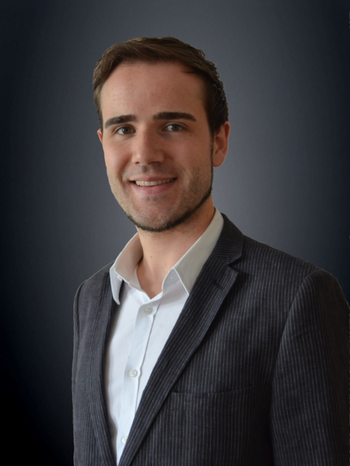Dr. rer. nat. Michael Thelemann

Landscape Archaeology and Architecture (LAA)
Physical Geography
SS 2011 – SS 2012
Studentischer Mitarbeiter im Fachgebiet der Bodenkunde und Standortlehre der Landwirtschaftlich-Gärtnerischen Fakultät der Humboldt-Universität zu Berlin
WS 2009/10 – SS 2011
Studentischer Mitarbeiter in der Abteilung Geomorphologie, Bodengeographie und Quartärforschung des Geographischen Instituts der Humboldt-Universität zu Berlin
WS 2009/10 – SS 2012
Studium des Master of Science, Geographie der Großstadt – Physische Geographie, Umwelt und Natur an der Humboldt-Universität zu Berlin
WS 2007/08 – SS 2009
Studium der Geographie an der Universiteit van Amsterdam
WS 2005/06 – SS 2009
Studium des Bachelor of Science, Physische Geographie an der Humboldt-Universität zu Berlin
2004
Abiturabschluss an der Lily-Braun-Oberschule in Berlin
Human and Environment Interactions in the Environs of Prehistorical Iron Smelting Places in Silesia, Poland. Landscape Archaeological and Geoarchaeological Investigations in the Context of Early Iron Smelting
Within the framework of the interdisciplinary research project (A-5-2) “Iron mining in the Przeworsk Culture”, this doctoral thesis dealed with the human-environment interactions of early iron smelting in the Widawa catchment area in Lower Silesia, Poland.
In this area, which belongs to the southwestern primary distribution area of the Przeworsk culture, a cluster of iron slag sites from the pre-Roman Iron Age and early Roman period is situated. It is assumed that with the emergence of this culture (approximately 2nd century BCE) the technology of iron smelting, originating from the Near East, has been introduced to this area. In order to enable this, respective requirements in terms of the resource situation and landscape conditions needed to be met. Vice versa, deforestation and exploitation of required resources and the smelting activities influenced the landscape development.
This study focused on three approaches in the context of human and environment interactions in regard to early iron smelting: (i) a resource approach investigating the general resource situation, the favorability for bog iron ores and the geochemical and mineralogical composition of local ores and prehistoric slags; (ii) a landscape approach applying a minimally invasive strategy based on geological and geomorphological mappings, percussion drillings and radiocarbon datings and (iii) an environmental approach focusing on small-scale geochemical impacts of human activities at furnace locations of the prehistoric smelting site of Pielgrzymowice. Apart from iron ore, considerations on the resource potential implied no scarcity of the required resources during early iron smelting. Distributions of iron contents in receiving waters and presently available bog iron ores indicate a strong correlation with a local cluster of prehistoric slag sites. Slags, collected from these sites, show a similar geochemical composition as slags from other centers of early iron production. In the vicinity of two local sites, Rychnów and Pielgrzymowice, human-induced landscape changes in the temporal context of early iron smelting could be substantiated in alluvial fan respectively slope deposits. On the micro-scale geochemically investigated stove and pile remains at Pielgrzymowice show increased but uncritical heavy metal contents. Human activities in the spatial-temporal context of iron smelting left marks that are even today noticeable in the regional sediment archives. Thus, iron smelting not only had a discernible impact on the human development in general, but also on the landscape in Silesia.
This dissertation project was successfully completed within the Research Group A-5 Iron as a raw material of the Excellence Cluster 264 Topoi.
2010
Makki, M.; Frielinghaus, M.; Hardt, J.; Thelemann, M. (Hrsg.): Boden des Jahres 2010 – Stadtböden. Berlin und seine Böden. Berliner Geographische Arbeiten 117.
